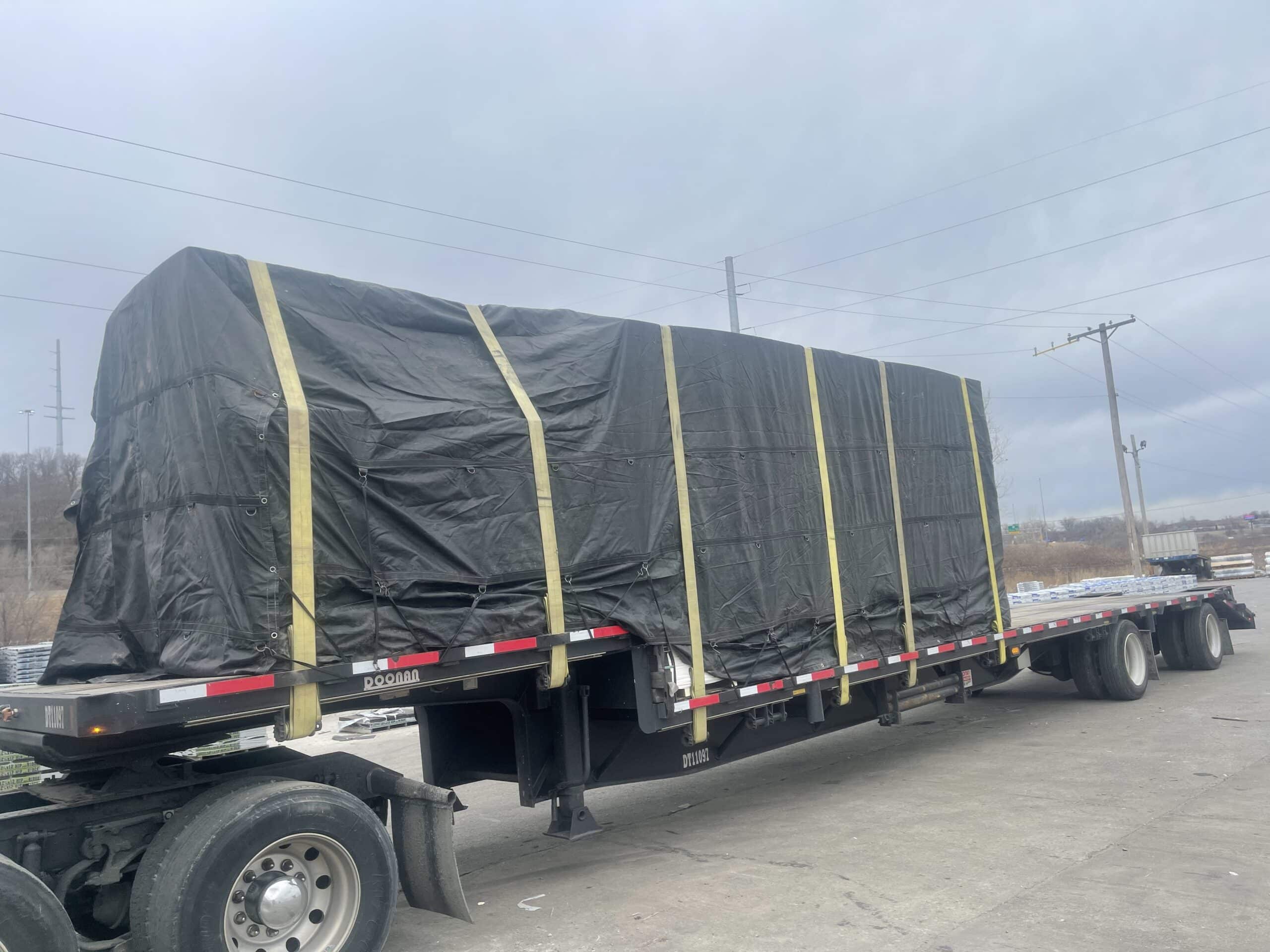Tarping Systems for Trailers in Heavy Equipment Transport

William Thomas / January 2021
What is a Tarping System for Oversize Load Transport?
A tarp is a piece of material made to protect exposed oversize equipment transport from harsh weather conditions. Tarps are usually made of tear-resistant, fire-resistant, waterproof, and durable materials. In heavy equipment transport tarps are used to protect loads hauled on open trailers. Tarps are also used in trucking to cover loose loads, which may be a legal requirement by some states’ laws. While a tarp is just a protective cover, the tarping system is a combination of the components and mechanics that retract and deploy the tarp that covers and uncovers load on a trailer. A tarp system can either be mechanical or automatic. Mechanical tarping systems consist of mechanical and hydraulic components that can be manually operated from a safe position. The driver or the operator has to get out of the truck to operate the system via a hand held lever.
An automatic tarping system has an addition of electric and electronic components that enable the truck driver to deploy and retract the tarp with a click of a bottom (Or a flip of a switch) without having to get out of the trailer. An automated tap system takes 3 to 5 seconds to cover or uncover the trailer fully, but a manual alternative takes a few more seconds—depending on the speed of the operator. While both manual and automated tarp systems work in seconds, having to secure the load without the aid of any system, automatic or otherwise, will need at least two people to complete the job in twenty minutes.

Why Install Tarping Systems on Heavy Equipment Trucking Trailers?
Across all states in North America is a requirement to all dump truck trailer operators to ensure that their cargo is well secured and sealed before leaving the pickup point. This law also applies to all trucking trailer operators hauling hazardous loads. Besides the state’s regulations, a hauling company has a responsibility to protect the cargo during trucking and delivery process; and there is no better way to protect a load than to use a tarping system.
While it takes at least 15 minutes to attach a hand tarp and a driver or an operator has to get out of the trailer to do the job, a tarp system will complete the tasks in seconds. An automated tarping system proves handy when it is inconvenient for the driver to get out of the cab. As such, tarp systems present a safer, faster, and efficient load securing alternative when trucking a load. In the long run:
The minutes saved in every trip,
The safer work environment created to drivers and operators, and
The enhanced efficiency and reliability in protecting the load
Eventually increases revenues, reduces the cost of hauling heavy equipment, and results in an extensive network of happy customers whose heavy equipment was safely delivered in the shortest time possible.
Transport Your Tarping Systems Today
Heavy Equipment Transport is always available for a quote. Fill out the form or give us a call now! (888) 730-2951
Characteristics of a Good Tarping Systems for Efficient Trucking
Considering that the primary purpose of a tarping system for any trailer is to protect the shipment the driver is hauling, a sound tarping system needs to enhance safety, productivity, convenience, and speed. For these reasons, the tarping system should be accorded the same importance during purchase and maintenance as the trailers themselves. For improved productivity, reduced downtime, and enhanced cargo protection, here are three essential characteristics that a heavy equipment transporter needs to consider when buying a tarping system.
Quality: Components of an excellent tarping system should be made from quality material for long-lasting and reliability purposes.
Convinces and Speed: A good tarping system should either cover or uncover the cargo is at most 30 seconds.
Safety: Mechanical systems should be operated on the ground at a safe position, and the automated system should be operated at the comfort of the driver’s seat.
Common Types of Tarping Systems Used in Heavy Equipment Trucking
- Flatbed Trailer Tarps
- Transfer Trailer Tarps / Waste Transfer Tarp Systems
- Front-To-Back Tarp System
- Flip or Arm Tarp Systems, Commonly Known as or Mouse Trap Tarp
- Pull Style Tarp Systems
- Customized Tarp Systems
- Side Roll Tarp Systems, Also Known as or Side Dump Tarp Systems
- Transfer Trailer Tarps
- Roll-Off Tarp Systems or Auto Tapers or Automatic Tarp Systems
- Cable Tarp or Accordion Tarp
- Sliding Cable Tarp Systems